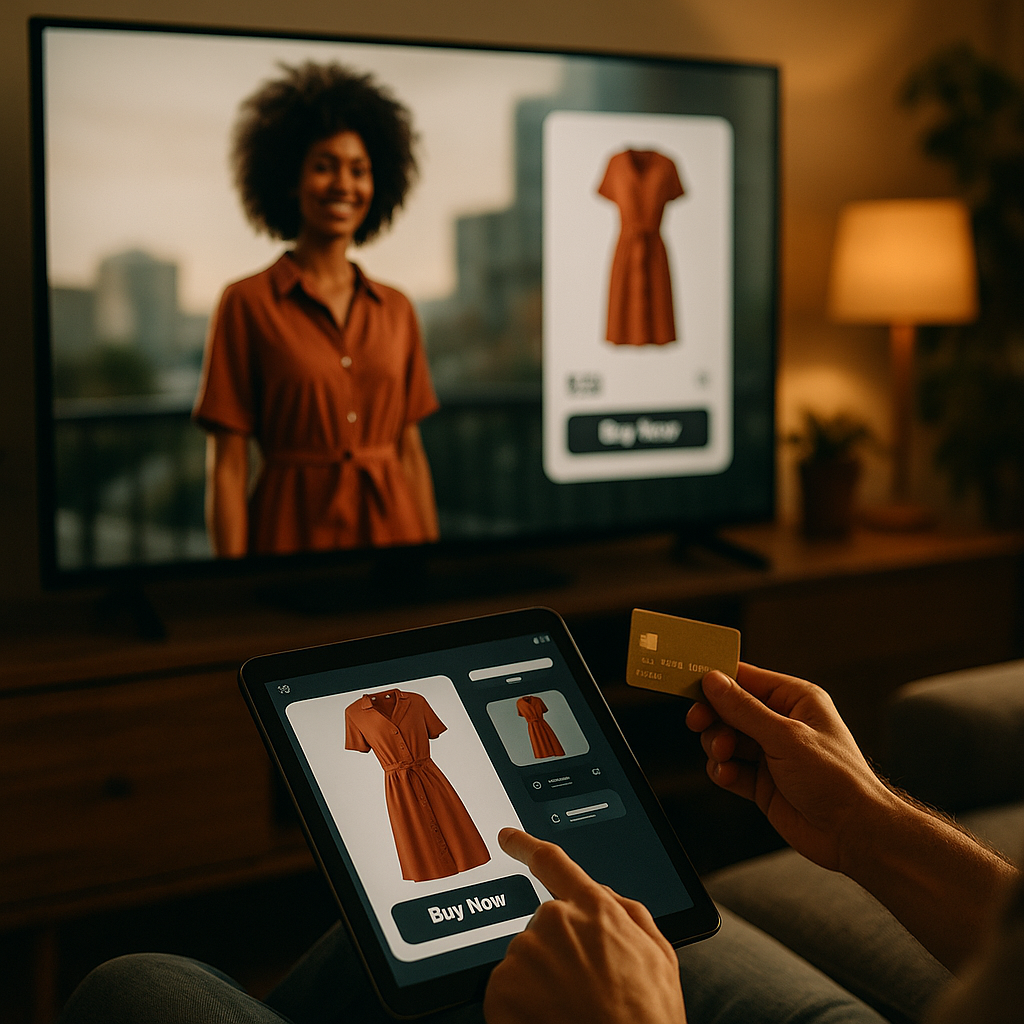The future of shoppable TV is finally here, connecting streaming content seamlessly with creator campaigns for an entirely new shopping experience. As consumers increasingly engage with video, marketers and creators are leveraging innovative technologies to turn inspiration into instant purchase intent. How will this evolution reshape e-commerce, content consumption, and digital advertising in 2025?
Shoppable TV Integration: The Evolution of Streaming Commerce
Shoppable TV, where viewers can purchase products showcased within streaming content, has matured rapidly. Platforms like Netflix, Hulu, and YouTube now embed interactive links and QR codes directly into their streams. This integration allows users to shop in real time without pausing their viewing experience, turning passive watchers into active participants.
In 2025, advanced AI-driven recommendation engines and computer vision technologies identify on-screen items, enabling even non-scripted, live-streamed footage to become fully shoppable. By mitigating the disconnect between discovery and purchase, streaming services are becoming not just entertainment hubs, but transactional marketplaces—blurring the boundaries between content consumption and e-commerce.
Creator Campaigns: Powering Authentic Engagement
The rise of creator-driven campaigns on shoppable TV channels is transforming influencer marketing. Rather than traditional ads or sponsored content breaks, creators weave product recommendations natively into their storytelling. According to a 2025 report from eMarketer, campaigns featuring creators yield conversion rates up to 2.6x higher than those relying on standard in-stream commercials.
Consumers crave authenticity. By partnering with trusted creators, brands tap into communities of genuine fans. These audiences are more likely to view recommendations as credible and personalized. With the addition of trackable, real-time shoppable features, brands can measure campaign performance with far greater precision—linking creator content directly to sales uplift.
Connected Devices: Enhancing the Shoppable Experience
As households adopt more smart TVs, streaming sticks, and mobile devices, the future of shoppable TV benefits from seamless cross-device integration. Viewers can initiate a purchase from their TV, then complete checkout on their phone, or scan on-screen QR codes for instant product info. Voice assistants like Alexa and Google Assistant further simplify search and purchasing—enabling hands-free interactions and reducing friction points.
These advances in connected technology are eliminating the “path to purchase” friction, making impulse buying easier and more intuitive than ever. Leading retailers now report over 35% of shoppable TV conversions happen via companion devices, underlining the importance of a fluid, omnichannel approach.
Data & Measurement: Unlocking New Insights for Brands
Shoppable TV generates vast amounts of actionable data. Brands can track the entire consumer journey across content, from product exposure to click-throughs and completed checkouts. Innovations in privacy-friendly analytics help marketers understand which creators, content genres, and interaction points drive the highest ROI—allowing for more sophisticated campaign optimization.
Multi-touch attribution models deployed in 2025 allow brands to tie sales directly to a specific streamer, scene, or even a creator’s spoken recommendation. This granular visibility empowers better budget allocation, smarter partnerships, and a move toward performance-driven content investments. Consumers, in turn, benefit as brands and creators deliver more relevant recommendations, tailored to individual preferences and behaviors.
Challenges and Solutions: Building Trust in Shoppable Streaming
Despite its tremendous promise, the future of shoppable TV presents several challenges. Data privacy, ad fatigue, and the risks of unauthentic promotion remain top concerns. Streaming platforms must maintain user trust by enforcing transparent disclosure rules and providing clear options for viewers to opt out of tracking or in-stream shopping prompts.
Innovative verification systems, such as blockchain-backed product authentication or creator reputation scoring, are emerging to boost transparency. Furthermore, brands are investing in collaborative content development—co-creating with creators rather than dictating scripted ads—to preserve the integrity and enjoyment of the streaming experience. As the industry matures, best practices and clear guidelines will be essential to maintain trust and maximize the value of shoppable content.
The Road Ahead: What’s Next for Shoppable TV and Creator Commerce?
The future of shoppable TV is bright, with industry leaders forecasting continued growth and innovation throughout 2025 and beyond. Expect further advances in AI-powered product recognition, hyper-personalized recommendations, and seamless integration with emerging technologies like augmented reality (AR) shopping and live commerce formats.
With creators at the heart of brand storytelling and commerce, we are witnessing a new era where entertainment and shopping are intertwined. Brands, creators, and streaming services that prioritize trust, data transparency, and captivating experiences will define the next evolution of digital commerce—fundamentally changing the way we discover, engage with, and purchase products.
In summary, the future of shoppable TV hinges on seamless integration between streaming content and creator campaigns, powered by cutting-edge technology and a relentless focus on user experience. Those who adopt these innovations now will lead e-commerce and digital entertainment in 2025.
FAQs: The Future of Shoppable TV and Creator Campaigns
-
What is shoppable TV?
Shoppable TV allows viewers to purchase products directly from streaming content, using interactive elements such as QR codes, links, or clickable overlays within the program itself.
-
How do creator campaigns improve shoppable TV?
Creator campaigns bring authenticity and trust to product recommendations, increasing engagement and purchase rates as audiences are more likely to act on advice from creators they follow.
-
What devices support shoppable TV content?
Most modern smart TVs, streaming boxes, tablets, and smartphones enable shoppable TV features, often working together for multi-device, seamless purchase experiences.
-
Are purchases made through shoppable TV secure?
Yes. Streaming platforms partner with secure payment providers and enforce privacy protections to ensure that transactions are safe and compliant with data regulations.
-
What challenges does shoppable TV face in 2025?
Key challenges include data privacy concerns, maintaining authenticity, and preventing ad fatigue. Industry best practices and emerging technology solutions aim to address these issues effectively.
